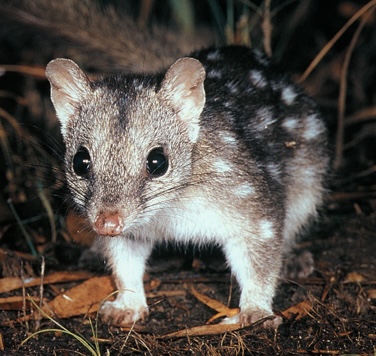A group discovers unusually spiky creatures in a nest
There is new hope for a species that once teetered on the edge of extinction.
A team of dedicated researchers in Australia has achieved a remarkable breakthrough in their efforts to help restore the population of a species that has faced significant decline over the years. Ecologists at the Mt Gibson Wildlife Sanctuary in Australia recently made an exciting and heartwarming discovery—one that signals positive progress for the future of the western quoll, a marsupial carnivore.
The discovery took place in the sanctuary, where researchers found a litter of tiny, newborn quolls. These little creatures are not just any animals; they belong to the western quoll, also known as the chuditch, a species native to Australia. For many years, the species struggled with a sharp decline in numbers, and their once widespread presence across the country had dwindled significantly.
The western quoll, a small marsupial about the size of a cat, once roamed throughout Australia, playing an important role in maintaining the balance of the ecosystem. These marsupials help control populations of smaller invertebrates, reptiles, and certain bird species. However, as European settlers began to populate Australia, the population of western quolls rapidly decreased, and the species eventually disappeared from many regions. Today, these quolls are found only in small, isolated pockets in the southwestern corner of Australia.
For the past few months, researchers have been working tirelessly to reintroduce the species to areas where they had once been extinct. The Mt Gibson Wildlife Sanctuary, an area that had previously lost its quoll population, became a focal point for these reintroduction efforts. With dedication and careful monitoring, researchers hoped to bring the species back to this vital ecosystem.
Now, with the discovery of these newborn quolls, their efforts appear to have paid off. The presence of baby quolls signifies that the marsupials are not only surviving in the sanctuary but thriving as well. This discovery marks a turning point in the conservation of the western quoll, offering renewed hope for the species’ future.
Georgina Anderson, a Senior Field Ecologist with the Australian Wildlife Conservancy (AWC), shared her excitement about the progress made so far. “Through regular monitoring, we can see that the quolls are doing well in the sanctuary. Encountering the first pouch young is a positive sign that they have successfully adjusted to their new environment,” she explained.
One quoll, affectionately named Aang, has become a regular feature at the sanctuary’s camera traps. Aang is one of the largest and most striking quolls at the sanctuary, known for his distinct personality. Anderson described Aang as a curious and bold individual who frequently visits multiple release sites, often raiding the chicken lures set up by researchers and even disrupting the bait canisters. His playful behavior and adaptability to the new environment showcase the resilience of the species and the success of the reintroduction efforts.
This new generation of western quolls is an exciting and much-needed step in the ongoing conservation of the species. The discovery of baby quolls indicates that the marsupials are not only surviving in their new home but are also successfully reproducing, which is a crucial factor for the long-term survival of the species.
While this is a significant achievement, the work is far from over. Researchers and conservationists remain committed to ensuring the species continues to thrive and expand throughout Australia. The ultimate goal is to restore the western quoll to the broader landscape, allowing it to once again play a vital role in the ecosystem across the country.
The recent success at Mt Gibson Wildlife Sanctuary provides a beacon of hope for the future of the western quoll. With continued dedication, it is possible that this once-endangered species could see its population grow and eventually flourish across Australia once more.
For now, the sight of baby quolls in the sanctuary offers a sense of joy and optimism. The hard work of conservationists has brought new life to a species on the brink of extinction, and with continued efforts, the future of the western quoll looks brighter than ever before.
